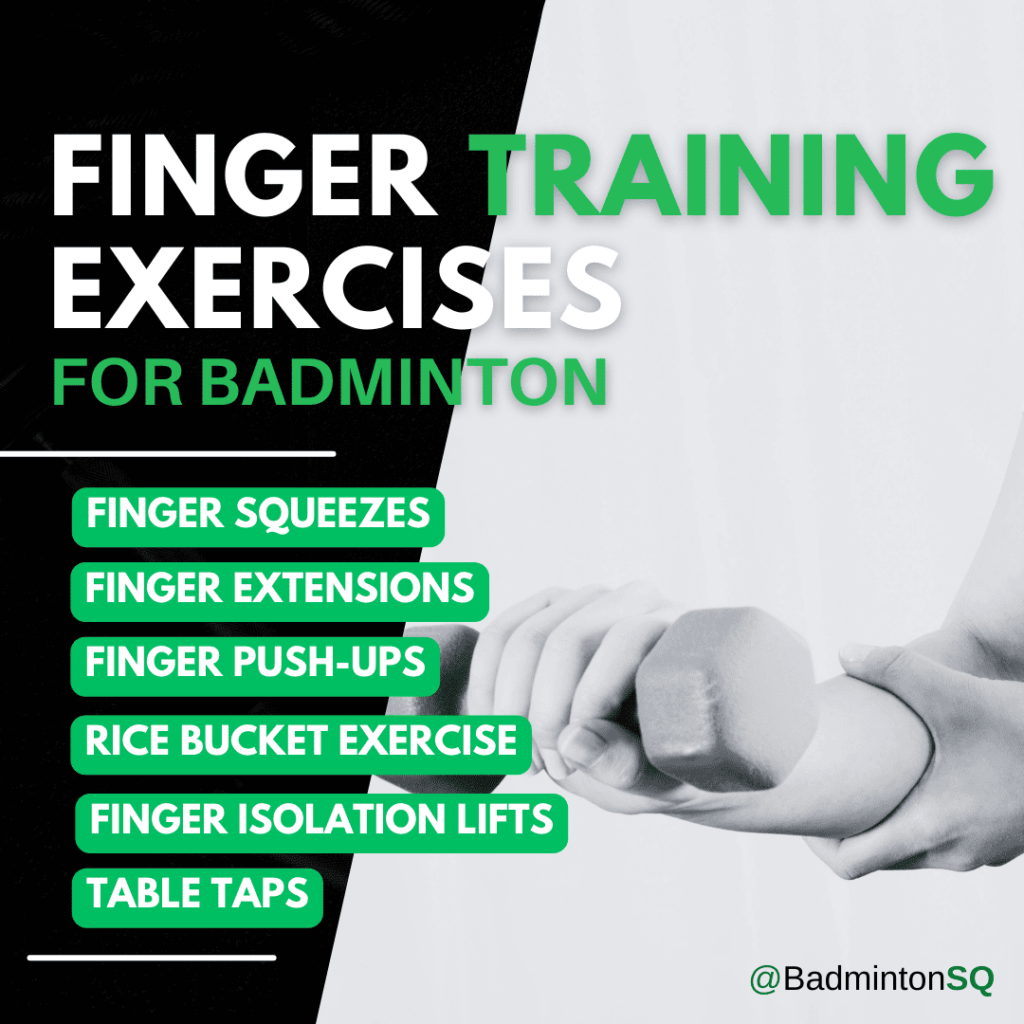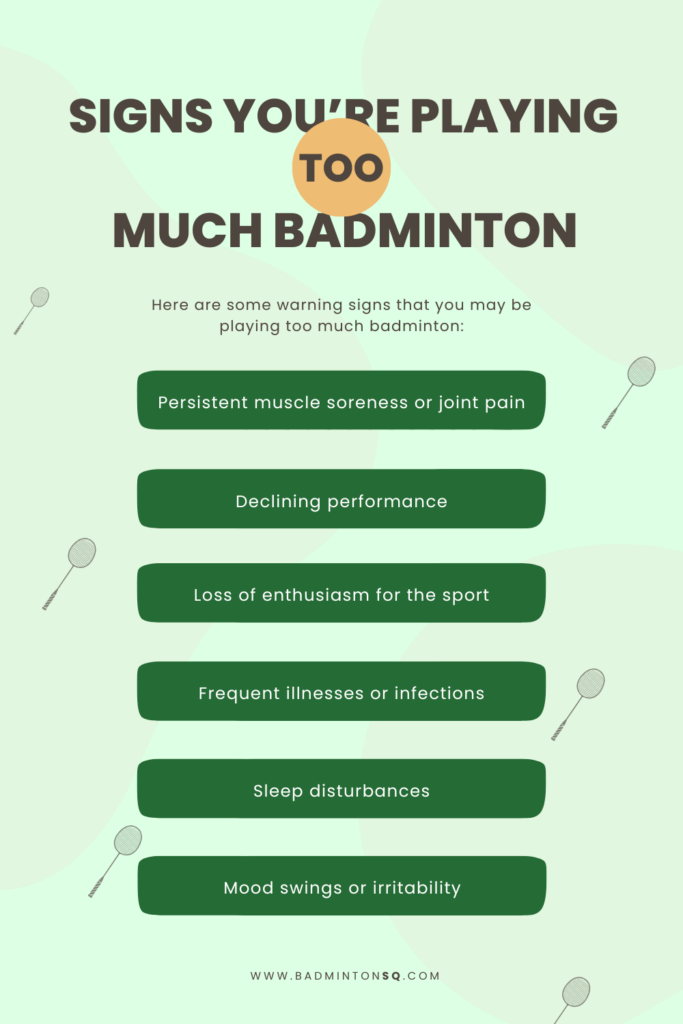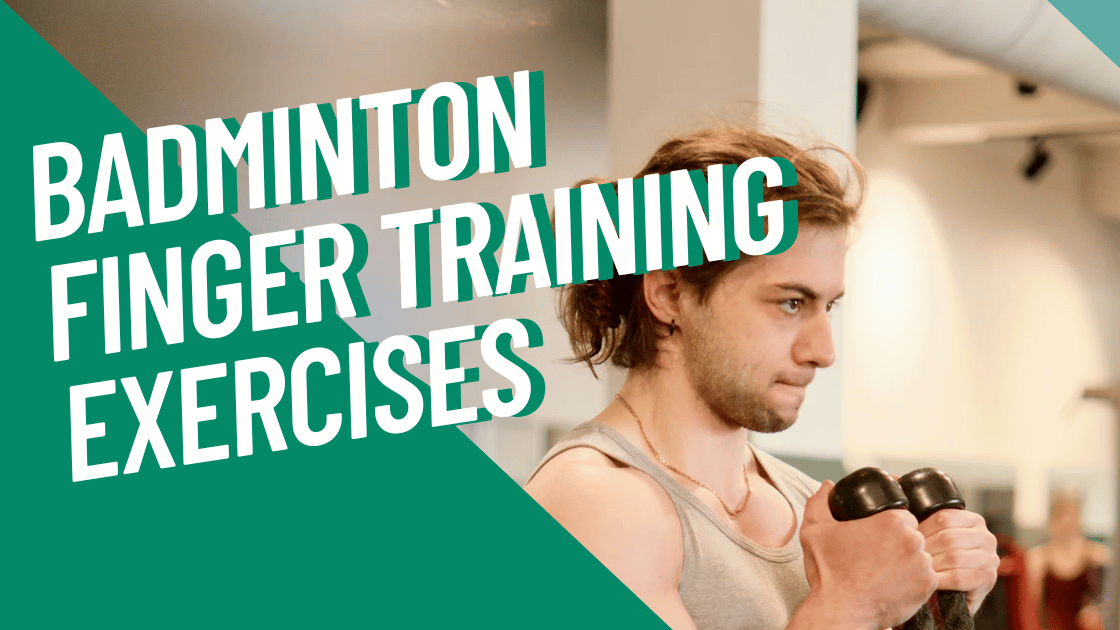Badminton is a demanding sport. You need to be agile and flexible, have muscle strength, be prompt, and much more. One aspect that often gets ignored in all this is finger power. But what is finger power in badminton?
Finger power in badminton is a combination of grip strength for forceful shots and finger dexterity for precise racket control and shot manipulation. This strength doesn’t come naturally to everyone. You have to make efforts to build finger strength and dexterity.

I am dedicating this article to discuss exactly that. We will see how finger strength is vital in badminton and then look at some excellent finger-training exercises. To give you a glimpse – we will discuss the following finger-training exercises for badminton:
- Finger Squeezes
- Finger Extensions
- Finger Push-ups
- Rice Bucket Exercise
- Finger Isolation Lifts
- Table Taps
Before getting into the details, let’s understand the role of finger strength in badminton.
The Role of Finger Muscles in Badminton
There are three types of hand muscles involved while playing badminton.
- Flexor Muscles
These are located on the palm side of the hand. They are responsible for closing the hand and gripping the racket. Major flexor muscles are Flexor Digitorum Superficialis, Flexor Digitorum Profundus, and Flexor Pollicis Longus.
- Extensor Muscles
These are located on the back side of the hand. They are responsible for opening the fingers and adjusting the grip during strokes. Major extensor muscles are Extensor Digitorum and Extensor Pollicis Longus and Brevis.
- Intrinsic Muscles
These are located within the hand itself. They are responsible for fine motor control and precision. Major intrinsic muscles are the Thenar Muscles, Hypothenar, Lumbricals, and Interossei.
Understanding these muscle types is important to study how they are involved in different grips of badminton. Let me break it down for you in the simplest words possible. Here, I am assuming that you are aware of the basic grips in badminton. I urge you to imagine those while reading this.
- The forehand grip involves flexor muscles for gripping, thenar muscles for thumb positioning, and other intrinsic muscles for precise control.
- The backhand grip involves extensor muscles for wrist extension, hypothenar muscles for little finger control, and lumbricals for finger positioning.
Considering all these are important for playing badminton, it is important that you train your finger muscles. Training them will build their strength and give you better shots. Now, let’s look at a few training exercises of finger muscles.
Finger Training Exercises
These exercises specifically target the muscles in your hands. These must be included in your regular workout routines. Some of these are so simple that you can do them anytime and anywhere. Let’s discuss them one by one.
Finger Squeezes
Equipment Required: Stress ball or grip strengthener
Technique: Hold a stress ball or hand grip strengthener in your hand. Squeeze it as hard as you can, then slowly release the pressure. Keep on repeating this at the same tempo. Do this with both hands and not just the dominant hand.
Recommended Reps: No ideal reps but make sure to alternate between both hands every 30 seconds.
Finger Extensions
Equipment Required: Rubber bands or resistance bands
Technique: Place a rubber band or resistance band around your fingers and thumb. Spread your fingers apart as far as possible against the resistance. Then slowly bring them back together.
This exercise targets the extensor muscles and thus improves grip control and flexibility.
Recommended Reps: Perform 3 sets of 15 to 20 extensions for each hand. Change the hand after each set. Also, rest for 30 seconds between sets.
Finger Push-Ups
Equipment Required: No equipment required
Technique: This is just like push-ups but instead of your whole hand you balance your body on your fingertips. There are three kinds of variations in this
- Wall push-ups
- Table push-ups
- Floor push-ups.
The floor push-ups are the hardest so start with either wall or table push-ups and then as you gain strength move on to floor ones.
For this, place your fingertips on a flat surface. Slowly lower your body down until your forearms are nearly parallel to the surface. Then push back up using your fingertips.
Recommended Reps: Perform 3 sets of 10 to 15 push-ups. Rest for 1 minute between sets.
Rice Bucket Exercise
Equipment Required: A bucket filled with uncooked rice
Technique: Fill a bucket with uncooked rice. Dig your hands one at a time or both together depending on the size of the bucket. Now try gripping, spreading fingers, and twisting your wrist while your hands are submerged in the rice.
You can reuse this bucket numerous times. If you are not going to empty the rice from the bucket then make sure to store it securely and cover the top so it doesn’t get in contact with moisture a lot.
Recommended Reps: Spend 3 to 5 minutes practising various motions.
Finger Isolation Lifts
Equipment Required: Light weights or small objects
Technique: Attach small weights to all your fingers or place small objects like coins or nuts on the tip of all your fingers. You might need some help setting this up.
Once the weights are on your fingers, lift up one finger and then lower it down. Repeat this for all fingers one by one. Once all fingers are done, start again from the first finger.
Do this for both your hands and not just the dominant hand.
Recommended Reps: 20 to 30 repetitions for each finger.
Table Taps
Equipment Required: A flat surface like a tabletop
Technique: Place your hand flat on a table. Spread your fingers wide. Now, gently tap each fingertip on the table in rapid succession. Do this for all fingers one by one. Once one hand is done, do the same for the other hand.
Recommended Reps: Sets of 30 seconds of each finger
Safety Tips and Precautions
While these exercises are very simple and easy to do, they require proper form to prevent injuries. You must always check that you are not doing anything wrong.
- Always ensure that your wrist and fingers are aligned properly.
- Avoid bending your wrist in awkward positions.
- Perform exercises with slow and controlled movements.
- Avoid jerking or sudden motions.
Most importantly, you must always start with lighter resistance or simpler exercises. Gradually increase the intensity as your strength improves. If you don’t do that, you might overtrain and exhaust yourself. Some common symptoms of overtraining are:
- Persistent pain
- Swelling
- Decreased performance
- Fatigue
If you accidentally do this, you also need to know how to manage these symptoms. Here are some tips that never go wrong.
Rest – Take sufficient time to recover between training sessions. If your fingers are in pain, take a break until the pain goes away.
Ice – Apply an ice pack over the area that is affected. This is especially useful if there is swelling in your fingers or hands.
Adjust Training – If you notice signs of overtraining, reduce the intensity or frequency of your finger training exercises.
Hydration – You must be well hydrated not just during the training sessions but all the time. Sip small amounts of water throughout the day. Using one of the marked bottles helps you keep track of your water intake.
Nutrition – Nutrition is the most important part of avoiding exhaustion from training. All the nutrients must be consumed in appropriate amounts. I highly recommend getting a customized diet plan to suit your dietary needs.
Besides, all this you should really consider consulting a physiotherapist. Their professional guidance can ensure you are not harming your body. They will even provide recovery plans in case of injuries. They will track your progress throughout your training sessions so you know how close you are to your goals.
Updated December 2024
How to Stop Blister from Forming on Hands from Badminton?
These are the best ways to prevent blisters from forming on our hands while playing badminton
1. Make Sure Use Right Grip Size – A grip may not be too small or large, If it is then your hand twist, that leads to friction and blisters.
2. Always Use Quality Grips -In my thought, Opt for cushioned gripsthat help to absorb much sweat and reduce friction.
3. Dry Hands – Make use use of towel or wristband to keep your hands dry while playing. If you have excess moisture in your hands that can increase friction, you may apply antiperspirant on your palms that help keep them dry and reduce sweating.
4. Tape Our Sensitive Areas – If you know certain areas on your hands are prone to blisters, consider to use athletic tape on them before start playing, this helps to protect layer against friction.
5. Your Griping Style – Avoid gripping the racket too tightly, especially during intense moments. It seen that relaxed grip reduces friction and helps to prevent blisters.
6. Relax You Hands – If you feel discomfort in your hands, take a break, continuous play without rest can lead to blisters.
7. Warm Up Exercises – Always do warm-up exercises for your hands and wrists before you start playing, that helps to relax the muscles and skin.
8. Always Check you Hands – If you feel any tenderness or see redness on your hand skin while playing, stop play immediately and address it before it develops into a blister.
9. Treat Blisters Promptly – If still blister does, first step to clean the area gently with soap and water. Then cover it with a sterile bandage or blister pad.
In these ways, you can avoid hand blisters or its discomfort.

Integrating Finger Power into Your Badminton Game Strategy
Now that you have all this new knowledge – how do you use it? Integrating finger power comes down to strength, timing, and consistency. And at the end of the day – all of the aforementioned factors are developed through practice.
We’ve said it before: At first, your grip needs to be relaxed. Go ahead and do some fast grip changes to get used to the new grip.
After that, you can practice some simple shots like drives, clears, or lifts where you can really benefit from using your finger power. Try to keep a relaxed grip until the very last moment and then tighten your grip and feel how your shot changes.
It should feel like you snap your fingers at the last moment or just try to grab something very quickly.
Having a relaxed grip until the last millisecond is key to mastering finger power.
It will take some practice and some getting used to, especially if you have a very tight grip. So go ahead and: practice, practice, practice!
Conclusion
Strong fingers translate to a firmer grip for powerful smashes and clears. Flexible fingers enable precise racket control and shot manipulation. That’s why you need to build finger strength and flexibility. Including these exercises in your regular training routines or practising them at any point of the day will help achieve more finger strength.
FAQs
How do you strengthen your fingers for badminton?
To strengthen your fingers for badminton, do finger training exercises like finger squeezes, finger extensions, finger push-ups, rice bucket exercises, finger isolation lifts, and table tops. All these are discussed in detail in this article.
How do you train individual fingers?
To train individual fingers you can do exercises like finger isolation lifts where you work each finger separately.
How to increase finger stamina?
Finger stamina to grip the racket for a longer time can be increased by practising holding a stress ball or grip strengthener in your hand. This can be done several times a day, but make sure you don’t overdo it.
What are the best types of grips to prevent blisters on badminton rackets?
Grip material that is made up from cotton or towel grips are excellent for absorbing sweat, also some players used over grips, that are thinner and usually made from synthetic materials, that offer durability and shock absorption. These over grips are affordable and can be replaced frequently without significant cost and these help a lot to prevent hand blisters while playing badminton.
How often should I change my badminton grip to avoid blisters?
It is essential to change your racket grip regularly or on every matches. Better idea is to even replace our grips, when you notice any loss of tackiness (the grip feels slippery), Fraying or visible wear, accumulation of dirt or odor, which can harbor bacteria.
How can I increase my hand power in badminton?
You can boost hand power by strengthening forearm muscles, practicing grip exercises, and relaxing fingers before hitting the shuttlecock.
How do you generate power in badminton?
In Badminton, generating powerful shots involves proper weight transfer and rotation. Your hip rotates first and the rest of the body follows.
What is finger power in badminton?
Finger power in badminton refers to the strength and control of your fingers when gripping and maneuvering the racket. It’s crucial for shot accuracy.
